How to perform bioactive restorations using a "stamp" technique
Marina Papachroni, DDS, MSc, presents a case study on a Class II restoration on a permanent molar.
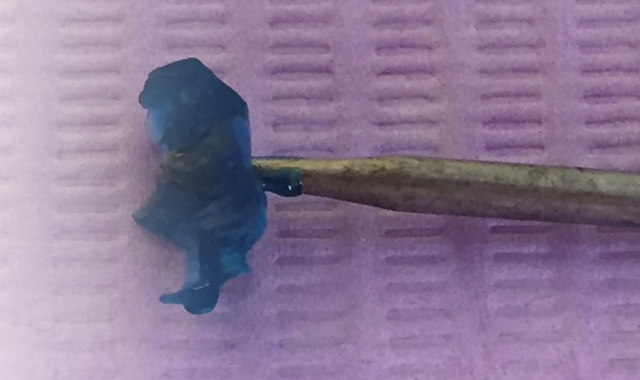
Restoring teeth to their original occlusal anatomy, without the need for polishing and finishing, is desirable in many cases.
The “stamp” technique allows the practitioner to duplicate the occlusal anatomy of teeth using a technique that is both quick and easy and well-suited for adults and the permanent teeth of cooperative children. It is also ideal for preventive resin restorations (PRR), where the use of a flowable material provides the dual role of restorative and sealant.
The “stamp” technique can be used in Class II cavities (Fig. 1) if the practitioner follows a two-step procedure: first reconstructing the mesial surface, and then filling the cavity as a Class I. The only restriction of the technique is to choose teeth with intact occlusal anatomy.

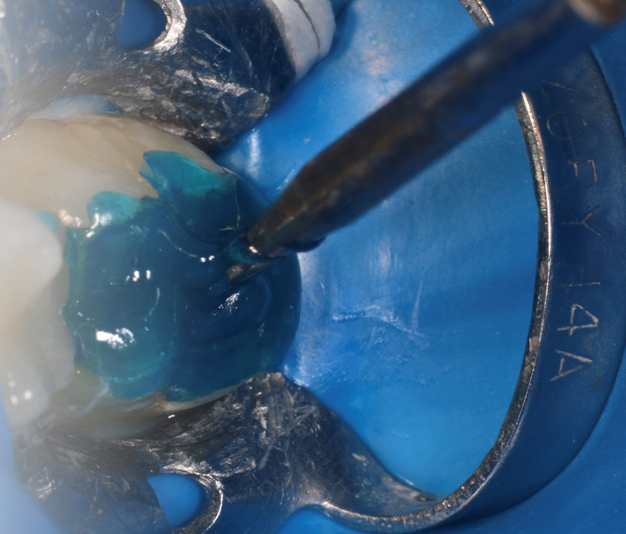
Fig. 1: A pre-operative photograph. Fig. 2: A stamp replicating the occlusal anatomy of the molar is made with a light cure flowable resin or hard setting liquid dam material. A bur is placed in the material to serve as a handle, and then it is light cured.
To create the pattern – i.e., the “stamp” – place soap or other separating medium on the occlusal surface of the tooth and flow a low viscosity resin or hard setting liquid dam material onto the surface (Fig. 2). Place a bur shaft (or microbrush) into the resin, and light cure. The bur shaft will act as the handle for the stamp (Fig. 3). Prepare the cavity in the usual manner (Fig. 4).
ACTIVA BioACTIVE-RESTORATIVE (Pulpdent) is the ideal material for this technique. It has the perfect consistency and flow characteristics, and the bioactive properties of the material provide the teeth with essential minerals that stimulate the natural remineralization process. ACTIVA releases and recharges calcium, phosphate and fluoride. University testing shows that this moisture-tolerant material absorbs shock and stress, and resists fracture and chipping, better than all other restorative materials tested.

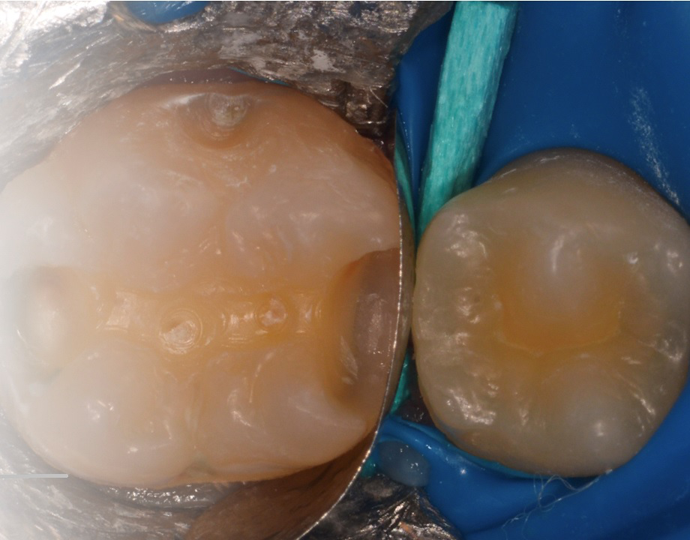
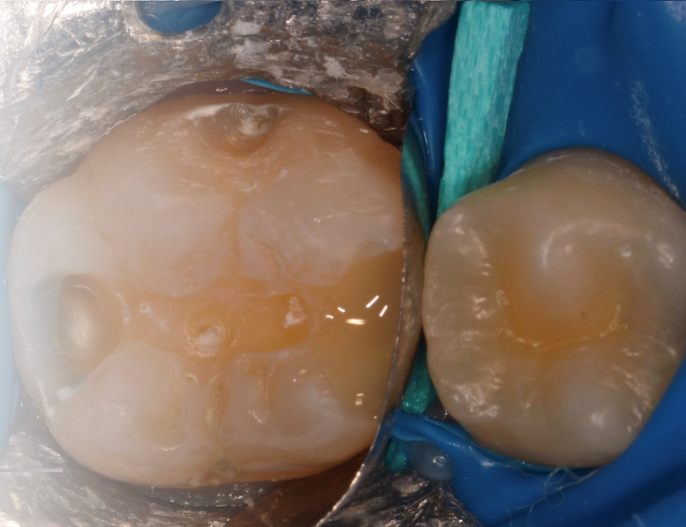
Fig. 3: The cured stamp with bur attached for a handle. Fig. 4: The cavity after removal of decay. Fig. 5: The mesial surface restored with ACTIVA BioACTIVE-RESTORATICE and light cured.
ACTVA is used to reconstruct the mesial surface of the tooth (Fig. 5). Starting at the cavity floor, ACTIVA is dispensed into the cavity, keeping the dispensing tip buried in the material at all times. The material adapts intimately to tooth structure, penetrating and appearing to flow into dentin and enamel.
Trending article: How and why to use ACTIVA BioACTIVE-CEMENT for crown cementation
To create anatomy in occlusal surfaces, place a Teflon strip on the surface, press the stamp to place, and light cure (Fig. 6). The Teflon prevents the stamp from sticking to ACTIVA, and the bur shaft is the handle for placement and removal of the stamp. The immediate result duplicates the original surface anatomy (Fig. 7), and after removal of any flash, the ACTIVA restoration does not require further finishing (Fig. 8).

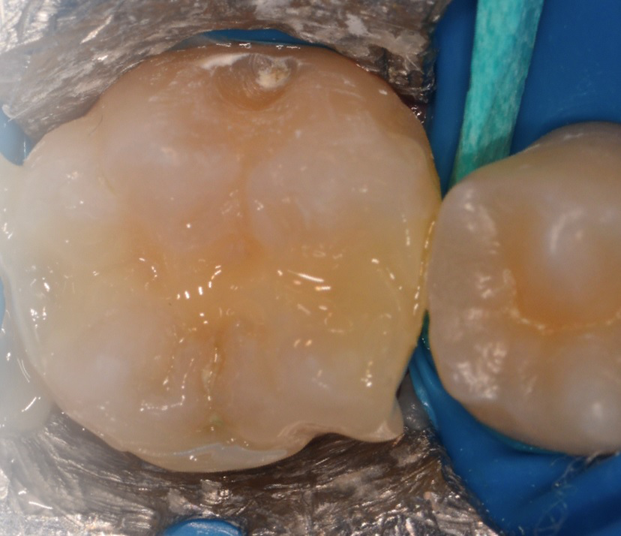
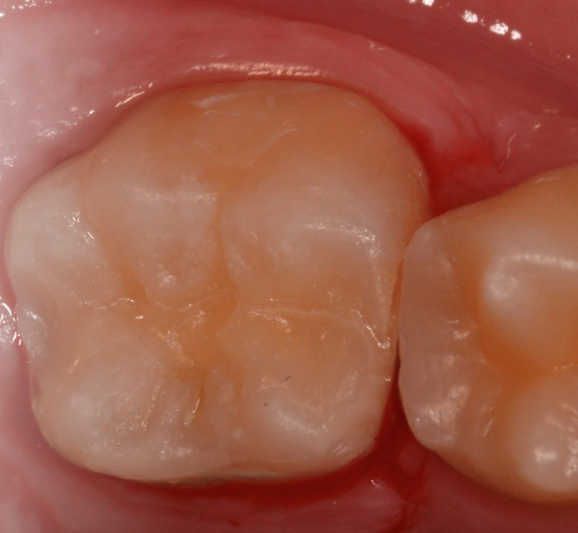
Fig. 6: ACTIVA is applied to the occlusal surface, covered with Teflon, and the stamp is pressed with the help of the bur handle, creating the anatomy. The Teflon prevents the stamp from sticking to ACTIVA. Fig. 7: The occlusal surface after light curing. Fig. 8: The final ACTIVA restoration after finishing.